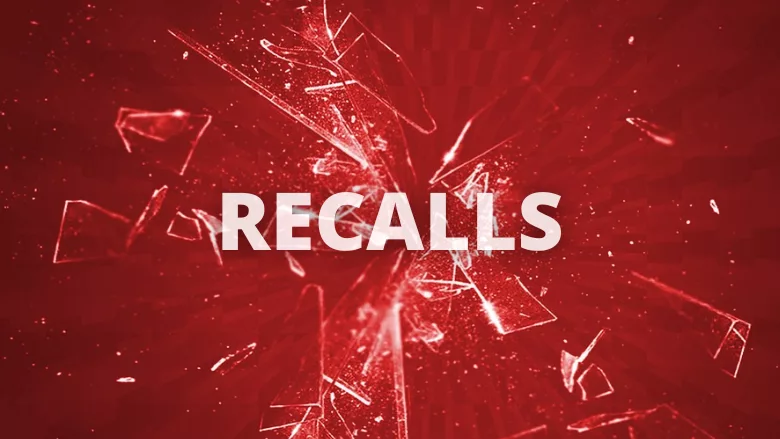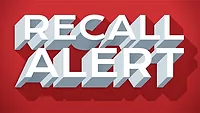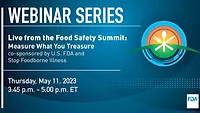Food Companies Struggle with a Fragmented Recall System

Credit: VetoNogueira via Pixabay
The current recall system in the U.S. has a lack of clear and consistent consumer-facing communication. We recently outlined the obstacles to fast and effective consumer messaging in our article, "Modernizing Recalls is a Must for Consumer Safety."1 Here, we lay out how food companies are struggling with recall execution and communication, stemming from a patchwork of regulations. This misalignment creates barriers for the prompt removal of contaminated product from consumers' homes. Ultimately, this lack of calibration results in avoidable illnesses and deaths.
It may come as little surprise that the U.S. Food and Drug Administration (FDA) and the U.S. Department of Agriculture's Food Safety and Inspection Service (USDA's FSIS) regulate different, although sometimes overlapping, products. What may be surprising is that they institute different, and sometimes conflicting, regulatory recall approaches, definitions, and requirements for consumer outreach. Additionally, state and local agencies are also involved in the process and, together, these regulatory bodies must work seamlessly to protect public health.
The goal of the recall system is to remove a product in the most expeditious way—period. Consumers trust the recall process will protect them. While the food industry rushes to retrieve product before anyone (else) becomes ill, they can be hampered by the complicated, inefficient, and sometimes contradictory frameworks set by each regulatory agency.
Three key issues confront industry due to the fragmentation of the recall system. The path to more effective recalls, in simple terms, is to standardize and streamline the existing system and utilize modern technology to circulate pertinent information.
First, standardize. Processes between and within agencies during routine recall execution and response are inconsistent. Stakeholders must communicate early, often, and transparently. However, our industry partners2 have noted instances where states identify a pathogen-positive product and the investigation moves to FDA, and communication becomes inefficient. For instance, states may become frustrated by the slow speed of FDA risk assessments and communications and issue their own alert ahead of FDA. Industry then finds itself caught in the middle, working directly with FDA and the state on the same issue.
If regulatory bodies are not utilizing the same language, then alerts may communicate different findings. For example, one agency may designate a recall as Class 1, yet another agency may designate it as Class 2. This creates unnecessary complications communicating downstream to consumers, and it creates delays in removing the suspected item from shelves. Interagency recalls, including international agencies, can bring another level of complexity, lag, and frustration.
There must be coordination across FDA and FSIS to align communication processes and timing. A synchronized U.S. response would support companies that must quickly pivot and work with other countries. In addition, a central, interoperable repository for shared documents is necessary so that industry personnel can focus their time and expertise on recovering product.
Looking for quick answers on food safety topics?
Try Ask FSM, our new smart AI search tool.
Ask FSM →
The inconsistencies of the system, which stem from entirely different approaches, impede firms from acting quickly. What constitutes a "recall" versus a "public health alert" versus a "product withdrawal" differs not only across agencies but also within each agency. Furthermore, FSIS classifies recalls prior to issuing recall communication, while FDA does not issue a classification until well after the recall has been initiated.
Industry also struggles with timely access to technical experts at the regulatory agencies. In times of crisis, industry needs direct and immediate access to FDA and FSIS subject matter experts for risk assessment discussions. While FSIS leverages a recall committee, smaller recalls trigger a focused technical review of the risk assessment. FDA's recall communication process is routed through the Office of Regulatory Affairs (ORA), where technical details may be lost in translation. Direct conversations between industry and regulatory subject matter experts are vital.
Furthermore, a better mechanism for FDA to share customer shipment lists with states is needed. The sharing of this pertinent information is currently based on state-mandated clearance levels. This creates a situation in which individual states waste precious time in a redundant process of asking the firm for customer shipment lists already provided to FDA. States are currently not an equal investigation partner, but they must become one to improve the process.
Second, streamline. Communications associated with foodborne outbreaks and recalls are a tangled web, not an information flow. Recalls in response to foodborne outbreaks can be challenging, as information changes quickly. In the early stages of a recall, the communication is between federal and state agencies and excludes industry. Comparatively, during outbreak investigations, the Centers for Disease Control and Prevention (CDC) communicates directly—and early—with industry but without including relevant federal and state public health regulatory bodies. This system inhibits information flow to stakeholders; no one participant has all the information during this critical time.
Occasionally, CDC chooses to issue a broad public health alert in advance of the regulatory agencies. Public health alerts are often followed by a press release announcing a recall of more limited scope. It is not always easy to discern when the right amount of evidence exists to implicate a food; there is no standard for determining the necessary amount of evidence. To the consumer, messaging from multiple sources, with varying degrees of detail, issued within days of each other is confusing.
Third, circulate. Public-facing recall communication is outdated and not consumer-friendly. Through our research, we know that a recall can be executed within minutes once there is agreement on its scope. Consumers with internet access can receive alerts before FDA has reviewed a company press release and long before FDA classifies a recall. They are more likely to get a text from a retailer notifying them about a recalled product than to see a press release. Furthermore, the likelihood of consumers monitoring two different agency websites for updates is too remote to consider.
The U.S. recall process must be modernized to take advantage of current communications technology. All parties—industry, regulatory agencies, and consumers—will be better served when processes and procedures embrace available technology and include different modes of information delivery. Standardized recall messaging is needed across agencies, and we must stop relying on press releases. Recall notifications can be easily pushed to smartphones that contain actionable messaging for consumers; food safety professionals across the supply chain want to make it a reality.
With hundreds of recalls initiated in the U.S. each year and an estimated 3,000 consumer deaths from food, it is safe to say this system is not working for the people it was designed to serve. Industry and consumers are frustrated by the ineffectiveness of recalls. The current system must be overhauled and rebuilt with one that supports businesses and saves lives. Standardizing recalls, streamlining data exchange, and effectively sharing food safety communications is the place to start.
- Coffman, Vanessa and Mitzi D. Baum. "Modernizing Recalls is a Must for Consumer Safety." Food Safety Magazine. June 7, 2022. https://www.food-safety.com/articles/7780-modernizing-recalls-is-a-must-for-consumer-safety.
- The Alliance to Stop Foodborne Illness. "Vision and Mission of the Alliance: Alliance Member Companies." 2022. https://stopfoodborneillness.org/alliance-to-stop-foodborne-illness/.








